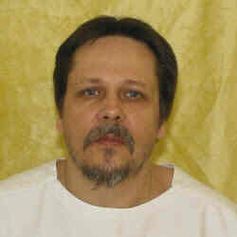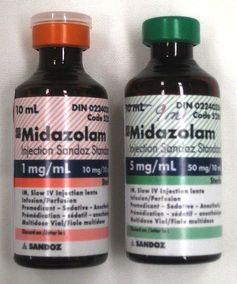
Ohio Execution: Lethal Injections are Based on Guesswork (Op-Ed)

This article was originally published at The Conversation. The publication contributed the article to LiveScience's Expert Voices: Op-Ed & Insights.
Ever since the time of the guillotine, doctors have been at the centre of the death penalty. Joseph Guillotin, the physician who suggested the device be used in 18th-century France, was actually against the death penalty – he hoped that a more humane method of decapitation would be a prelude to ending capital punishment.
It was nearly 200 years later, in 1977, that the end came for the guillotine. That same year, anaesthetist Stanley Deutsch proposed the so-called triple cocktail for lethal injection, consisting of a fast-acting anaesthetic (sodium thiopental), a muscle-paralysing agent (pancuronium) and a cardiotoxin (potassium chloride) to stop the heart for an execution in Oklahoma. There was a perception that this might be somehow more humane, despite reports of botched executions – deaths that took longer than they should, signs of skin burns and convulsions – and more than 1100 prisoners have been executed in this way.
But pressure by drug manufacturers and European export controls mean the supply of these drugs (and subsequent substitutions such as pentobarbital, a barbituate used for severe forms of epilepsy) is now limited, leading to executing states using different concoctions and combinations. The reported last words of Michael Lee Wilson in Oklahoma earlier this month, that he felt his “whole body burning” around 20 seconds into his execution, prompted some to suggest this may have played a part.
Untested drugs?

Much has been made about untested drugs being used in Ohio’s execution of Dennis McGuire, because the state opted to use a sedative called midazolam and a painkiller, hydromorphone, due to a shortage of pentobarbital.
In one sense being untested is true of all drugs used in executions, as no pharmaceutical company has ever developed a drug to be used to kill someone – this would be in complete breach of medical ethics. As a consequence, the executioners had to make a guess (and not necessarily an educated one) about what the lethal toxic dose is of the drug concerned.
Exporting death
The biggest change to how lethal injections are used came in 2011, when the European Union (which is fundamentally opposed to the death penalty) introduced export controls to prevent drugs being used for executions.
Sign up for the Live Science daily newsletter now
Get the world’s most fascinating discoveries delivered straight to your inbox.

The ban on exports of sodium thiopental for executions led the US to switch to pentobarbital. Then following pressure from the medical profession and others, Lundbeck, the Danish manufacturer of pentobarbital (sold as Nembutal), introduced a controlled distribution mechanism to tighten up its supply chain, preventing use by US prisons.
Despite attempts at stockpiling by executioners, the shelf life of their pentobarbital was limited to 2013.
The next switch was (to a very limited degree) propofol, the world’s most widely used anaesthetic and the drug infamously involved in the botched (and fatal) treatment of Michael Jackson.
When German firm Fresenius Kabi, which supplies the majority of the drug to the US, curbed shipments after it learned that Missouri’s Department of Corrections had bought an unsanctioned batch, Missouri governor Jay Nixon was so worried about the risk to supplies of propofol for patient care last October that he blocked the execution of Allen Nicklasson. He said his interest was “in making sure justice is served and public health is protected.”
All these drugs are important for use in critical care units or operating theatres in hospitals. They weren’t developed to be used in an execution chamber with poorly trained non-medical staff.
The pressure from manufacturers and countries that don’t want their drugs involved in executions has had a massive impact. The numbers of executions in the US last year fell to the lowest level since 1994 with 39 prisoners executed in 2013 in the US.
Homemade solutions
Executioners in the US have been forced to look at alternatives, for example the use of compounding pharmacies who are allowed to make small batches of a prescribed medication. But such unregulated pharmacies are also controversial in the US; as recently as 2012, botched manufacturing processes led to sizeable fungal meningitis outbreaks.
Other death penalty countries also use lethal injections, increasingly and most notably China, where the process is even more secretive.
And the effect of the EU restrictions has been global, not just limited to the US – even Vietnam has struggled to execute prisoners on death row and is considering resuming executions by firing squad.
It’s clear the problems with supply plus the desperation of executioners to find replacement drugs have highlighted that the lethal injection method is anything but a humane process.
David Nicholl does not work for, consult to, own shares in or receive funding from any company or organisation that would benefit from this article, and has no relevant affiliations.
This article was originally published at The Conversation. Read the original article. The views expressed are those of the author and do not necessarily reflect the views of the publisher. This version of the article was originally published on LiveScience.











